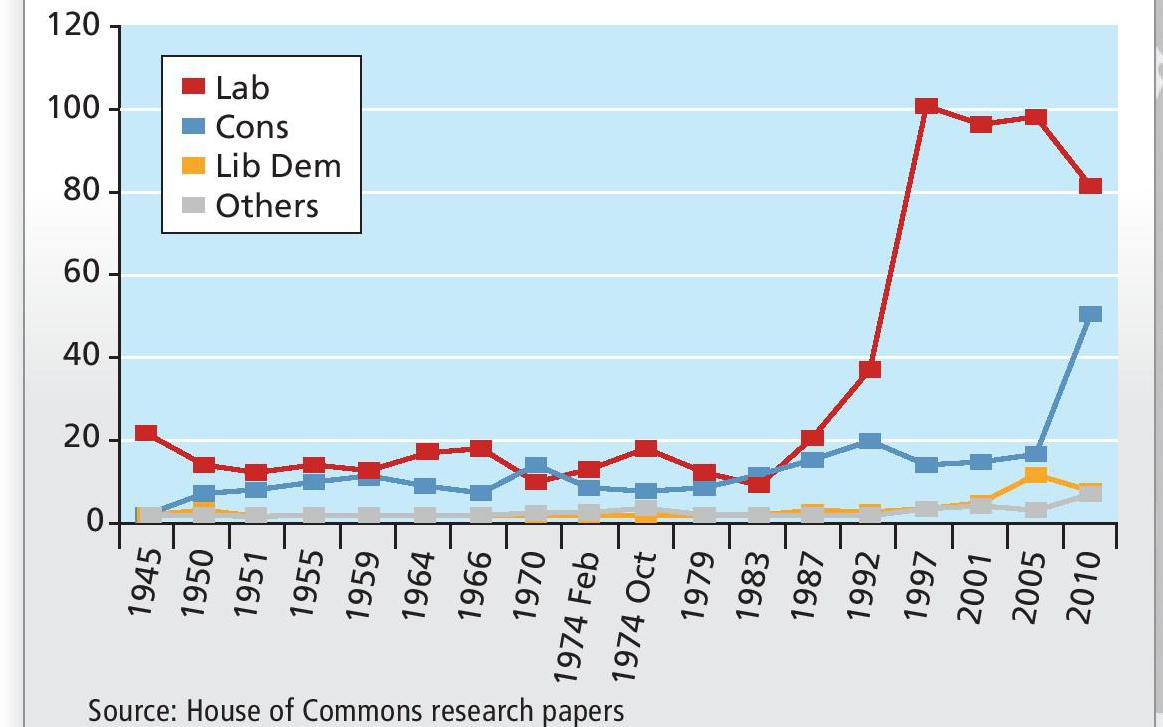
Her supporters claim that Lady Thatcher’s success should be considered a boon to all feminists. President Obama even commented that it showed ‘our daughters that there is no glass ceiling that can’t be shattered’. However, her critics argue that succeeding as a woman in a man’s world is not enough, and that Thatcher’s policies did little to help the advancement of ‘ordinary’ women in arenas of power. This is a common debate among feminists and the evidence here is mixed.
Figure 1 shows female Members of Parliament (MPs) from each party elected in all UK general elections from 1945. The x (horizontal) axis is the election year, the y (vertical) axis the number of women who won seats. When Thatcher became prime minister in 1979 there were only 19 female MPs. By 2010 there were 143, or 22% of all MPs. So maybe she did have an effect. However, these data also suggest that the real advance for females seems to have been in the Labour Party — from 1997 onwards.
Your organisation does not have access to this article.
Sign up today to give your students the edge they need to achieve their best grades with subject expertise
Subscribe




